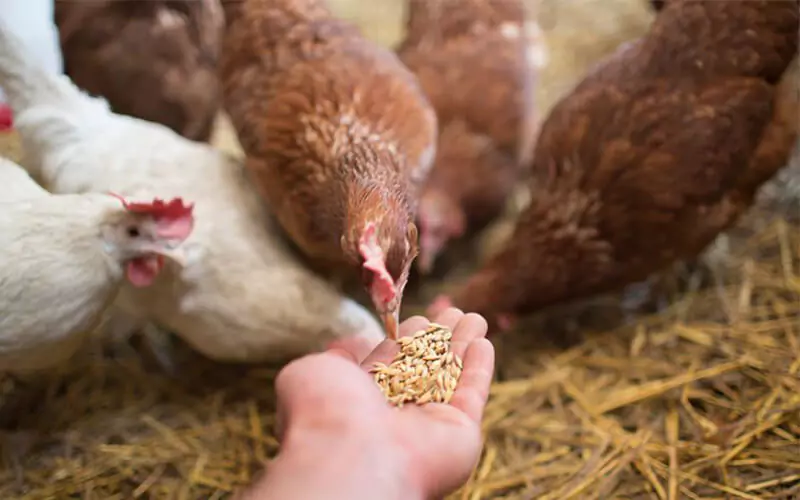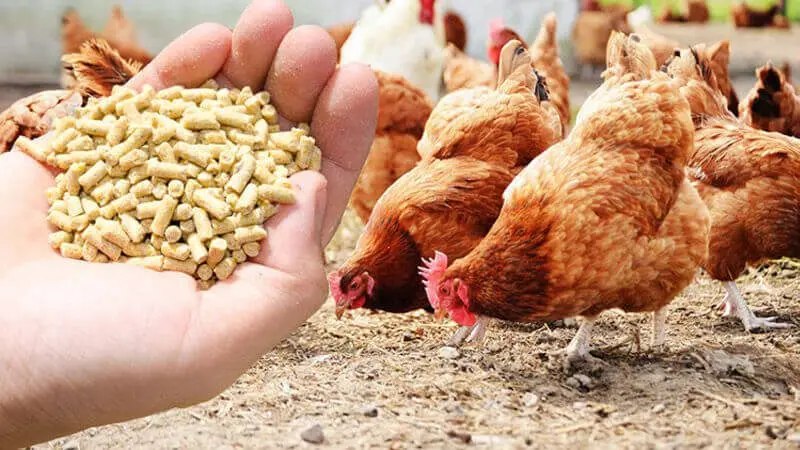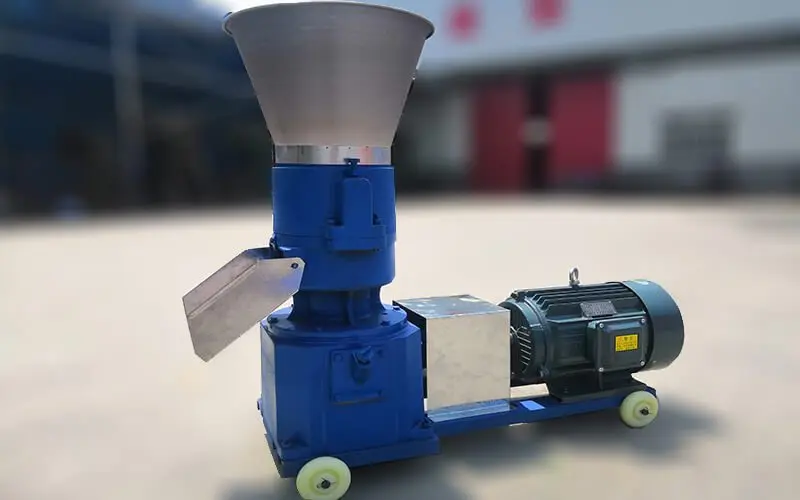Introduction
Whether you have a small backyard flock or a larger farm, you know the single biggest factor in raising poultry is the feed. It’s your number one cost, and it’s the key to keeping your birds healthy and productive.
Gaining control over your feed is critical for long-term success. Making your own poultry feed is the most powerful way to take charge of your operation. It lets you manage your budget and guarantee your flock gets the exact nutrition they need to thrive all year long.
Why Bother Making Your Own Poultry Feed? The Real Advantages
Taking the step to make your own poultry feed can seem like a lot of work, but the benefits are significant.
You Control the Quality and Freshness of Every Ingredient
When you make the feed yourself, you know exactly what is (and what is not) in it. There are no mystery fillers or low-quality components. You can choose to use fresh, high-quality, and even local grains. This gives you complete transparency.
Lower Your Feed Costs Significantly Over Time
The economics are simple. Buying raw ingredients like corn and soybean meal in bulk is almost always cheaper than buying pre-bagged commercial feed. Your initial investment in some basic equipment can quickly be paid back by the daily savings on your feed bill.
Tailor Nutrition for Your Specific Flock (Broilers, Layers, Chicks)
This is a huge advantage. Commercial feed is one-size-fits-all. When you make your own, you can create different recipes for different types of poultry. Broilers (meat birds) have very different needs than layers (egg-laying hens), and chicks need a special starter feed.
Avoid Unwanted Additives or Fillers
By controlling the ingredients, you can choose to make an all-natural, non-GMO, or organic feed if you source the right components. You are in complete control of your flock’s diet.


The Building Blocks of a Healthy Bird: What Your Flock Really Needs
Before you can make good feed, you have to understand what your birds need to thrive. A well-fed chicken is a healthy and productive chicken. It all comes down to four essential building blocks.
Protein: The Engine of Growth
Protein is the absolute key to growth and production. For your meat birds, or broilers, it’s what builds strong muscle. For your laying hens, a steady supply of good protein is what allows them to form a high-quality egg nearly every single day.
Energy: The Fuel for Daily Life
Energy, which comes from carbohydrates and fats in the feed, is the fuel that powers your flock. They need it for everything they do, from walking around the coop to producing eggs or growing bigger. The grains in your feed are the primary source of this essential energy.
Calcium and Phosphorus: The Keys to Strong Bones and Eggs
These two minerals are vital for building strong, healthy bones in all your birds. For laying hens, though, calcium is non-negotiable. A huge amount of calcium is needed every day to form a hard, protective eggshell. Phosphorus works as a partner with calcium to make this happen. A lack of these minerals is the number one cause of weak, brittle eggshells.
Vitamins & Minerals: The Spark for Good Health
Finally, your birds need a wide range of different vitamins and minerals for their bodies to function correctly. These are the tiny “spark plugs” of the system that help them fight off disease. The simplest and most reliable way to provide these is by using a balanced “premix” in your feed. Here in Alaska, making sure our birds are strong and healthy before the long winter comes is critical, and a good premix is a key part of that.


Building a Smart Feed Recipe: The Key Ingredients
A high-quality poultry feed is like a well-built house; it starts with a strong foundation and the right materials. Here are the key ingredients you’ll be working with.
The Energy Base: Grains
The bulk of your feed, about 60-70%, will be energy sources. This is what fuels your birds’ daily activity. The most common and effective choices are corn (maize) and wheat. Here in Alaska, a good energy-rich feed is crucial for helping your flock build up their reserves for the coming winter.
The Protein Powerhouse: Meals and Seeds
Protein is what builds muscle and produces eggs. The go-to choice for most farmers is soybean meal; it’s a high-quality and effective source. You can also use others like fish meal (in smaller amounts), canola meal, or sunflower meal, depending on what’s available and cost-effective for you.
The Essential Add-ins for Health
There are a few key additives that are non-negotiable. First is a source of calcium, which is vital for layers. This is usually finely ground limestone or crushed oyster shell mixed directly into the feed. You will also need to add salt and, most importantly, a good vitamin and mineral premix. Make sure you choose a premix that is specifically designed for either your broilers or your layers, as their needs are very different.
A Special Note for Laying Hens: Grit and Extra Calcium
If your laying hens don’t free-range on dirt and gravel, you must provide them with two things in separate dishes. The first is insoluble grit. These are tiny stones they use in their gizzard to grind their food. The second is an extra dish of crushed oyster shell. This allows them to take in more calcium whenever their bodies tell them they need it to form strong eggshells. Don’t mix these into the main feed; let the hens eat them as needed.
Formulating Your Feed: Broilers vs. Layers Have Different Needs
This is a critical rule in poultry farming: you cannot feed a meat bird and an egg-layer the same food and expect good results. Each bird is on a different mission, and they need the right fuel for their specific journey.
The Broiler’s Fast Track to Growth
A broiler’s job is to build muscle, and they do it very quickly. Their feeding plan is a short sprint. For the first three weeks of life, they need a starter feed that is packed with very high protein, typically around 22-24%. This is what fuels their explosive initial growth. After that, they switch to a grower/finisher feed. The protein can be a little lower now, as the focus shifts to adding healthy weight.
The Layer’s Journey to Production
An egg-laying hen is on a much longer journey, and her diet is all about long-term health and production. For the first 18 weeks, a young hen, or pullet, eats a balanced starter and grower feed. This feed has good protein to help her build a strong, healthy frame. This is a crucial investment in her future. Here in Alaska, ensuring our pullets are strong as they head into their first laying season is key.
Once she starts laying, around 18-20 weeks, she switches to a layer feed. Her protein needs are now more moderate, around 16-18%. But her need for calcium skyrockets. A good layer feed will have a very high calcium content to give her what she needs to form a strong, solid eggshell every single day.
The Craft of Making Your Own Feed
Making your own poultry feed is a rewarding process. There’s a real satisfaction in knowing exactly what your birds are eating. Here in Alaska, spending a day in early August stocking up on fresh, homemade feed is a smart move for the seasons ahead. The process is straightforward if you follow a few key steps.
1. Start with a Smart Recipe
First, decide exactly what you’re making. Are you creating a high-protein starter feed for your broilers, or a calcium-rich layer feed for your hens? Your recipe is your blueprint, so have a clear plan before you begin.
2. Weigh Everything with Care
Accuracy is the secret to a good, balanced feed. You must weigh each ingredient carefully. Use a good quality scale and follow your chosen recipe exactly. This ensures your flock gets the consistent nutrition they need.
3. The Grind and the Mix
Next, run all of your whole grains, like corn and wheat, through your grinder. You’re looking for a consistent, meal-like texture. Once everything is ground, add all your ingredients—including your vitamin and mineral premix—to your mixer. Let it run until the mix is perfectly uniform. This is a critical step; a good mix means every bite is a complete meal.
4. The Final Step: Mash or Pellets?
At this point, you have a high-quality mash feed that is ready to be fed to your flock. If you want to take it to the next level and create pellets, there are two final steps. You’ll first need to condition the mash, which usually means adding a small amount of moisture. Then, you can run it through your poultry feed pellet machine. Always remember to let the finished pellets cool completely before you bag them for storage.
FAQ About Poultry Feed
1. How much more protein does a broiler need than a layer?
A lot more. A typical broiler starter feed might have 22-24% protein to support rapid muscle growth. A standard layer feed, on the other hand, usually has around 16-18% protein. Layers need enough for their bodies and for egg production, but too much can be wasteful and hard on their systems.
2. What exactly is a “premix”?
A premix is a carefully blended mixture of essential vitamins, minerals, and often amino acids in a powdered form. You add a small, measured amount of this premix to your main feed production raw materials (like corn and soy) during the mixing stage. It’s the most efficient way to ensure your flock gets all the vital micronutrients they need in every bite.
3. Can I just use crushed eggshells for calcium instead of buying a supplement?
While you can offer your own flock’s crushed and fully dried eggshells as a free-choice supplement, it’s not reliable enough to be the only source of calcium in your main feed. To ensure every hen gets the consistent amount of calcium she needs every day for strong shells, it’s best to include a measured source, like oyster shell flour or limestone, directly in your feed mix.
